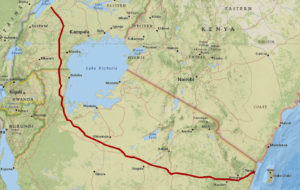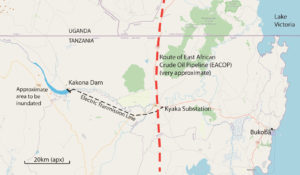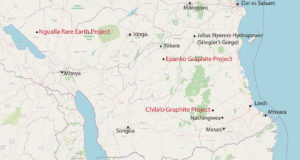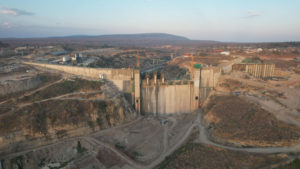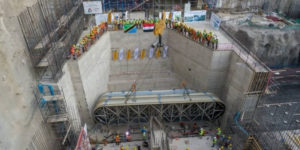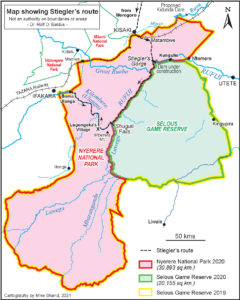by Ben Taylor
Criminal syndicate at Barrick?
Acacia Mining, a subsidiary of Barrick Gold that operated the company’s gold mines in Tanzania up to 2019, lost as much as $31 million each year to a criminal syndicate operating at the North Mara gold mine, according to an internal report. The report was prepared in 2017 by a consulting firm, Europe Conflict and Security Consulting Ltd for a security contractor at Acacia Mining, and was recently cited in a court case underway at the High Court in London.
The report found that North Mara gold mine was “fully infiltrated” by at least one criminal syndicate that stole millions of dollars in fuel, equipment and high-grade gold-bearing rock, with the collusion of police, the report found. It warned further that there was widespread corruption, fraud and misappropriation in the mine’s contracts and land compensation payments.
The report estimated that criminal activities at North Mara “may easily exceed US$20 million annually” and could be as much as US$31 million. It pointed to the involvement of both Acacia staff and the criminal syndicate in all criminal activities surveyed, adding that “this indicates a significant level of collusion/infiltration.”
The syndicate at North Mara had “strong intelligence, operational and organisational capabilities,” the report said, including the ability to manipulate security-camera coverage, move large stolen items without detection, rapidly adjust exit routes when detected, and co-opt the police and security guards. As many as 30 per cent of the mine’s staff could be involved in the activities, with “local government and political patronage” protecting the criminals, according to the report.
Barrick has long faced scrutiny for police-related violence and deaths at North Mara. Dozens of local villagers have reportedly been injured or killed by police, who receive regular support from the company for providing security outside the mine. The company has blamed the violence on “intruders” who illegally enter the mine in search of gold-bearing rock.
These allegations are the subject of the court case currently underway in London, where Tanzanian villagers are claiming that Barrick co-operated with local police who caused deaths and injuries in the local community – an allegation that the company denies.
The internal report estimated that the losses from trespassers were only about US$200,000 a year, while the mine was losing much larger sums from organised criminal groups operating in much more sophisticated ways.
A spokesperson for Barrick did not respond to questions from reporters from The Globe and Mail newspaper (of Canada, where Barrick is based) about the report on criminal activities at North Mara. However, in the court case Barrick lawyers acknowledged that the company was aware of allegations that the mine was infiltrated by criminal syndicates in collusion with the police.
The mining company “took what steps it could, including rotation of police officers assigned to the mine site, to prevent collusion,” Barrick said in its statement of defence.
Lawyers for the Tanzanian claimants said Barrick must disclose more information on the North Mara criminal activities. They argue that the police violence is sometimes a result of police collusion with one or more criminal syndicates at North Mara. To help the syndicates, police have controlled access by the trespassers and used force against villagers who were suspected of competing with the syndicates for gold-bearing rock, the lawyers said.
A British-based rights group, Rights and Accountability in Development (RAID), said the alleged police involvement in organized criminal syndicates at North Mara was troubling, since the police are still involved in day-to-day security at the mine today. “It raises serious questions as to why Barrick continues to have such a close relationship with the police,” said Anneke Van Woudenberg, executive director of RAID. (The Globe and Mail)
Helium drilling enters crucial stage
The search for helium gas has stepped up with the commencement of new drilling in Rukwa region, according to the Minister for Minerals, Anthony Mavunde. The new drilling holds the potential of making Tanzania the world’s leading source of helium and securing the future of the vital gas used in medical diagnostics, among other critical applications.
Justyn Wood, the CEO of Noble Helium, the company responsible for the exploration, expressed his appreciation for the collaborative efforts that have brought them to this juncture in a statement.
“This operation is a testament to the dedication and collaborative efforts of Noble Helium’s team, the Marriott Group, SLB Services, local suppliers and workers, and the Tanzanian government. It is an absolute milestone moment in the company’s history.”
The milestone marks a crucial juncture as Tanzania gears up to commence actual helium production in 2025, provided all goes according to plan. The numbers are staggering, with Tanzania’s primary helium project in Rukwa estimated to contain as much as 138 billion cubic feet (bcf) of recoverable helium, making it the largest known primary helium deposit in the world.
This surpasses the 54 billion cubic feet of helium discovered at Lake Rukwa in 2016, which was already celebrated as a discovery of global significance.
The global helium market has long been dominated by the US, and more recently by Russia. However, with the significant reserves in Tanzania, experts in the mining sector believe the nation is poised to become the world’s largest helium supplier.
A senior economist specialising in mineral resources, Dr John Kitomari, said, “The successful extraction and export of helium could significantly boost Tanzania’s economy and contribute to the country’s long-term financial stability.”
“The world watches with bated breath, eager to see if this crucial stage of exploration will usher in a new era for Tanzania as a major helium producer, fundamentally transforming the dynamics of the global helium market,” he said.
Besides providing a vital ingredient for party balloons and other inflatables, helium is an important gas in modern medical technology such as MRI scanners and has uses in scientific research and space exploration.
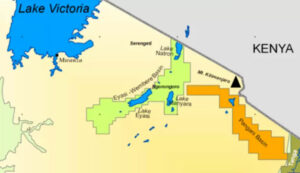
Map showing the Eyasi-Wembere basin area, to the west of Arusha, with the southern tip near Singida.
Oil exploration underway in Northern Tanzania
Tanzania has completed the acquisition of 2D seismic data in the Eyasi Wembere basin, a key step in the country’s quest to discover oil and natural gas in the region. The project, which cost TSh8 billion, was conducted in areas within the eastern branch of the great rift valley, spanning six districts across five regions, namely Singida, Arusha, Tabora, Shinyanga, and Simiyu
The basin is believed to have the potential to contain significant oil and gas resources, based on its geological similarities to other oil-producing basins in the region, such as the Albertine and Turkana basins in Uganda and Kenya, respectively.
Mr Sindi Maduhu, a Geophysicist from the Tanzania Petroleum Development Corporation (TPDC) and the Project Manager, explained that the 2D seismic data acquisition will help the country identify areas with potential for oil and natural gas presence.

